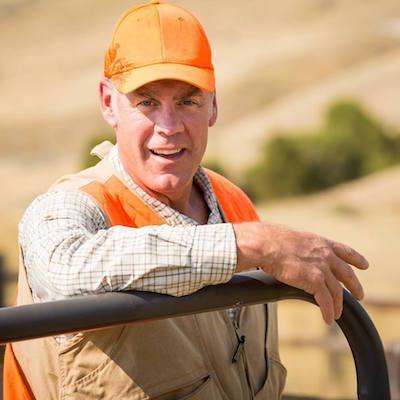
Interior Secretary Ryan Zinke is to open a two-day meeting Wednesday to look into reorganization the Interior Department and its 70,000 employees/DOI
A two-day meeting is scheduled to open Wednesday with Interior Secretary Ryan Zinke outlining how he would like to reorganize the Interior Department, which oversees the National Park Service.
Just exactly how the Park Service could be impacted remains to be seen, and likely could be more visible to agency employees than park visitors. But in recent interviews, Mr. Zinke has talked about letting concessionaires take over more aspects of running parks, such as transportation systems or maintenance work.
The grand scheme seems to revolve around moving the deck chairs of the Interior Department's land managers (Park Service, Bureau of Land Management, U.S. Fish and Wildlife Service) into regions that follow the boundaries of "13 major watershed(s)."
“The last reorganization of the Department of the Interior was 100 years ago,” Secretary Zinke told the editor from Outdoor Life. “Today, the National Park Service has its own [administrative] regions. The Fish & Wildlife Service has its own regions. The Bureau of Reclamation has its own regions. So how does that play out in the field? Well, if you have a trout and a salmon in the same stream; the salmon is managed by the National Marine Fisheries Service. The trout is managed by me [Department of Interior], the water might be managed by the Forest Service but downstream it’s managed by the Bureau of Reclamation, and if it flows through an Indian reservation it’s managed by me, via the Bureau of Indian Affairs through a water compact.”
A problem with trying to realign the agencies, though, is that the various agencies' missions differ from one another. The Park Service is mandated to preserve landscapes and natural resources and provide for the public's enjoyment, while the BLM is tasked with more of a multiple-use approach to managing public lands.
Still, the secretary's stated goal is to reduce the central office bureaucracy of the bureaus and reassign more people to field assignments.
Conservation organizations fear the worst from the proposed reorganization.
"Secretary Zinke has proposed dramatic cuts to the Interior Department budgets, demoralized career employees, and purged senior career officials from their areas of expertise," reads an email sent out from the Center for American Progress. "The organizational changes he is proposing must be assessed in the context of the Trump administration’s broader efforts to diminish the authority of the Interior Department and weaken its agencies’ ability to conduct independent oversight of the industries it regulates."
Too, the secretary's own words cause eyebrows to rise. Last year he commented to a group of representatives from the recreational vehicle industry that the Park Service staff was no good at running campgrounds, but could handle cleaning restrooms. In the Outdoor Life profile, he was dismissive of Park Service staff at Glacier National Park because they were not focused on timber management.
“I had a parks administrator tell me that timber management wasn’t his priority, that his priority was managing visitors. I told him, ‘Then what do I need you for? If managing visitors is your only job, then all I need is a ticket-taker at the entrance gate.’ So many people get into park management because they’re preservationists. I’m a conservationist, and that means actually managing what we’re stewards of.”
At the end of the day, the secretary's reorganization plan will have to make sense to Congress, which controls the purse strings that funds these agencies.






Comments
A key function of any regional office of any bureua is the interaction with other federal, state and local agencies and stakeholders. The 13 major "watershed map" DOI released last year breaks up geogrphic areas and some states so you can have one state working with multiple DOI "regional/watershed " offices so I am not sure what this will solve. If you take a look at how most federal agencies are organized now - they are organized along geograpic l(mostly state) ines. Regional offices work with many other federal agencies (Corps of Engineers, HUD, GSA, etc) who are organized to have oversight over the same georgrphic area for their agency. The other executive agencies will not be going to a "watershed map" so in the end you will break up existing relationshps and partnerships and create more confuson and inefficiencies for all involved - especially the public.
Should we reorganize a Department based on a joint command military model which might be more appropriate for emergency responses or military engagements where quick decisions need to be made (like a fire)? At some point let's hope those involved get beyond the surface and push for more examples of how this will benefit the public rather than the same references to salmon, trout and timber management.
Imgaine how much this will cost in time and money?
This seems like another example of actually limiting authority, discretion and decisionm-making in the field and concentrating more power in DC. Seems contrary to what we hear is the goal of all of this effort.
James Watt is beginning to look like Teddy Roosevelt.
I think Zinke needs to learn about what regional offices actually do. Becasue this model doesn't account for that. It is the most asinine idea to come out of Interior in a while, and that is really saying something.
My only hope is that - no matter how he rearranges the furniture - it won't be severely enough they can't be moved back where they were.
Too True!! Can we get him back? Or even Jewell, or Salazar..........or let's be honest, just about anyone.
Ahhhh, remember the old days.